Africa
A rapidly growing population with insufficient access to electricity
September 2024
In terms of power supplied from the grid, Africa is the world's most under-served continent and for many people, generator sets are an essential part of daily life. But with emerging possibilities from renewable generation, how might the diesel generator set market evolve in the region over the next decade?
A Growing Population Demanding More Electric Power
Africa has the fastest growing population in the world, growing an average 2.5% a year over the last 10 years and accounting for 40% of the world's entire population growth during that time. Growth in 2022 was the same as the entire population of a country the size of Malaysia.
Population is expected to reach 2.5 billion by 2050, with the region second only to Asia. Africa also has one of the world's youngest populations with 70% of people below the age of 30.
Much of Africa is underserved by utility grid supply: although accounting for almost 20% of the world’s population, Africa consumes only 3% of the world’s electricity. Today, 600 million people, around 40% of the population, more than the entire population of Europe, have no access to electricity at all.
Those who do have access to electricity endure regular outages: Africa suffers more outages than any other global region, averaging around 1,200 hours a year, equivalent to more than three hours a day. Some countries, particularly Nigeria, have a significantly higher figure with more than 4,000 hours of outages a year, equivalent to 11 hours a day.
600 million people in Africa, more than the population of Europe, have no access to electricity.
Electricity Generated by Utilities per Head of Population
(kWh, 2022)
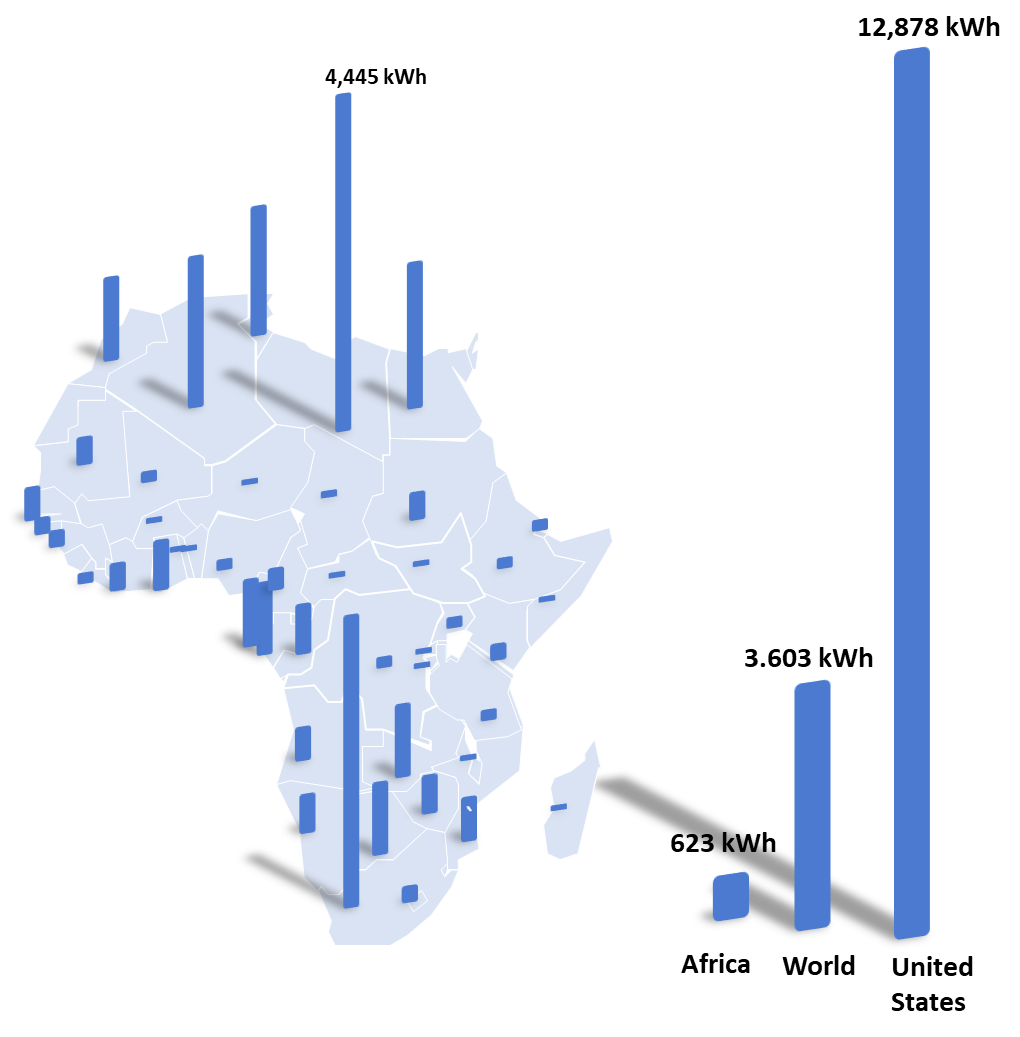
Source: US Energy Information Administration (kWh), World Bank (Population)
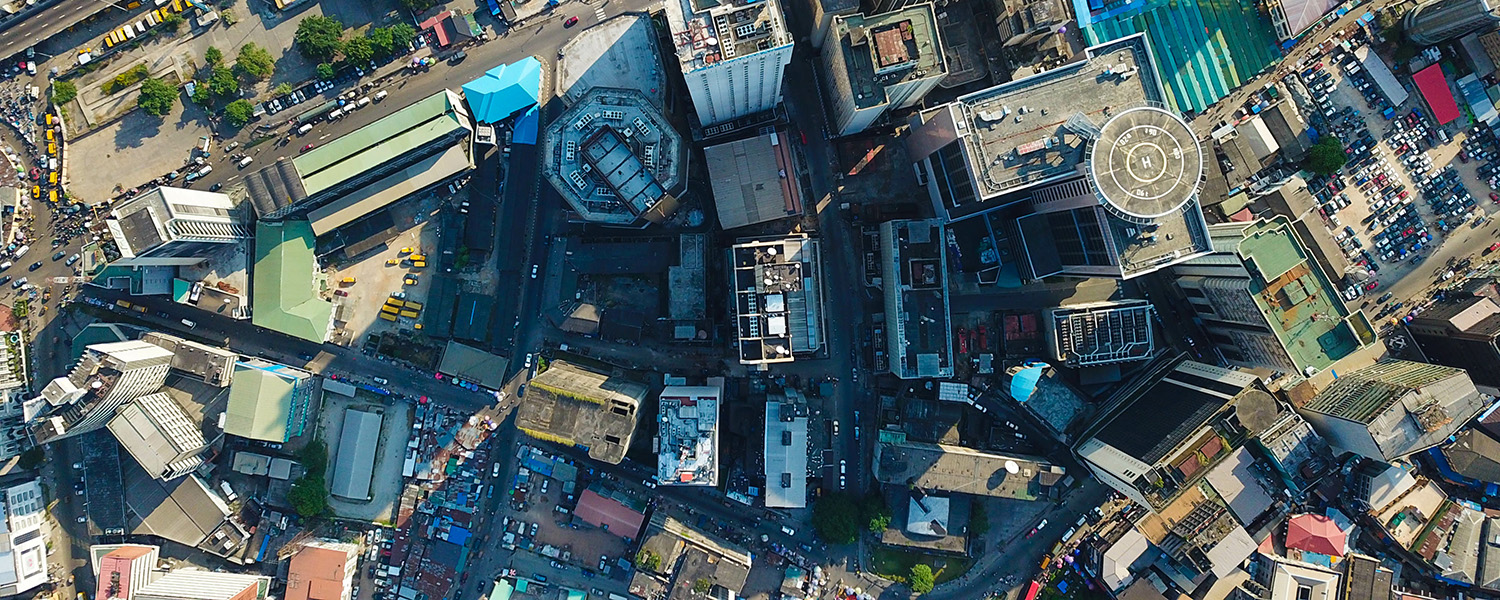
Marina Business District, Lagos, Nigeria
$1 billion opportunity for diesel generator sets in Africa in 2023.
Diesel Generator Sets in Africa
For most businesses in Africa to function, a generator set is an absolute requirement and in a third of African countries the total output of off-grid generator sets exceeds grid generation capacity.
Across the African continent, there is a high level of familiarity with generator sets and the brands of generator sets and their engines are equally as well known as automobile brands.
Overall, the African market for diesel generator sets was around $1 billion in 2023. Reflecting the economic structure of the region, the market is heavily weighted towards lower power ratings: a typical generator set owner is a small to medium-sized business.
Africa Diesel Generator Set Opportunity by Power Band
(US$ m)

Source: Genstat from Parkinson Associates. Values based on OEM ex-works.
Major Markets
Out of around 60 territories in Africa, including offshore islands, the top five markets (Nigeria, South Africa, Egypt, Democratic Republic of Congo and Algeria) account for almost half of the market opportunity for diesel generator sets.
Among the top five markets:
Nigeria, Egypt and South Africa are Africa's top three economies.
Nigeria, Algeria and Egypt are significant oil producers and are among the world's top 30 oil producers.
All five countries are engaged in mining.
And all of them endure persistent power outages.
Beyond the top 5 - 10 markets, the opportunity begins to fragment quickly. For producers of diesel generator sets, this has big implications for approaches to both product distribution and sales organizations.
In smaller markets, many distributors are trading companies, representing multiple brands and selling a wide range of products.
2023 Africa Diesel Generator Set Opportunity

Source: Genstat from Parkinson Associates.
Market Supply
Most diesel generator sets are imported into Africa and European producers have a well established presence. Today exports from Europe account for around a third of the overall market, with units produced in China accounting for around 40%.
Premium generator sets are highly valued and around 40% of the market is accounted for by the major global vertically-integrated OEMs.
Nigeria is the only country where there is significant local production: this has been driven partly by the local regulatory environment and also by the huge opportunity available (Nigeria accounts for around 15% of the entire opportunity in Africa).
With regular and sustained usage of generator sets, there is a large and profitable parts opportunity and all the major generator set brands have well-developed distributor networks to support customers with branded parts and premium service. Alongside , there is a very competitive market for lower cost will-fit parts, supplied and fitted by independent service agents.
Africa Opportunity 2023 by Source All Power Bands > 7.5 kVA
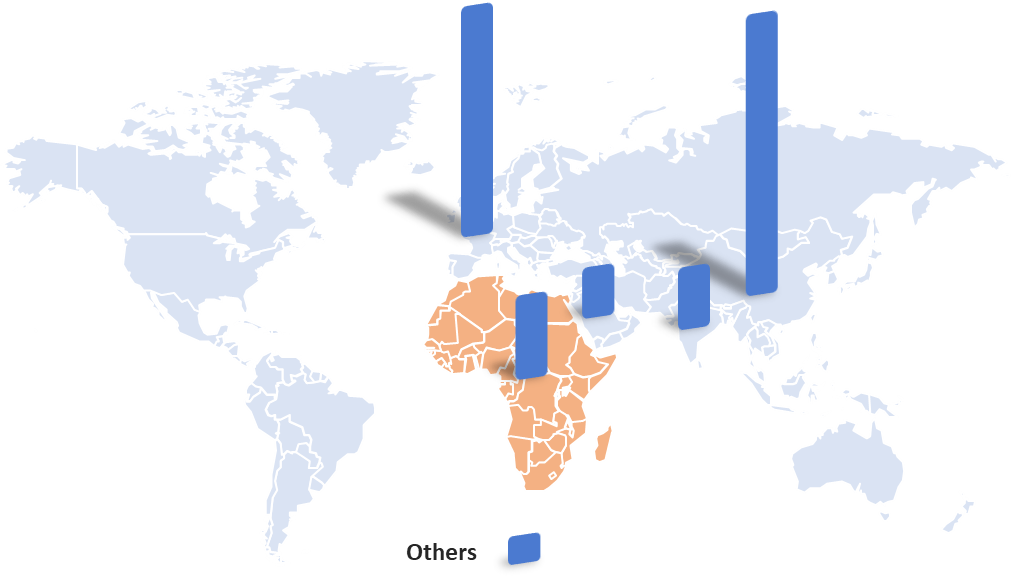
Source: Genstat+ from Parkinson Associates.
Diesel generator sets are installed widely across all business sectors but some are worth looking at more specifically.
Telecoms
Africa is a major continent with vast distances to cover and installing landline-based telecommunications was always a challenge. For reasons of cost and practicality, the region was quick to embrace mobile communications and today has a thriving smartphone market, driven by its young and rapidly-growing population.
The continent has around 200,000 cellular network towers and more than 35% are not connected to the electricity grid. For those that are connected, regular and durable power outages in many countries mean that a source of standby power is essential.
Diesel generator sets have met this need for many years, but at a cost: in the region, up to 50% of operating costs for a cellular tower can be attributed to fuel and maintenance of generator sets. More recently, generator set OEMs have focused on increasing efficiency and reducing operating costs, with the latest variable speed hybrid generator sets reducing fuel consumption by up to 40%. Combine this with extended service intervals, large fuel tanks and remote monitoring and the savings can really add up.
When diesel generator sets reach the end of their working lives at cellular towers and it's time to replace them, many network operators and towerco companies are now exploring carbon-reducing alternatives, usually involving solar and energy storage.
In Africa, we are seeing a gradual weakening of the market in the 7.5 - 30 kVA power band, of which the telecoms sector is a significant player, and it's likely that in most countries, demand for diesel generator sets from the telecoms sector has passed its peak in the region. But there's still a large population of generator sets at telecoms sites and for generator set OEMs and their distributors, there will remain a very considerable and profitable opportunity for parts and support for some time to come.

Cellular network operators and towercos are showing interest in solar as an alternative to diesel generator sets
Mining
In Africa, the mining sector is a huge consumer of electricity, accounting for more than 20 GW of power and consuming 3 x that of all residential users.
It’s also a sector that is set for substantial growth: the Democratic Republic of the Congo accounts for two-thirds of global production of cobalt, a vital element in lithium-ion batteries, and South Africa produces 70% of the world’s platinum, which is used in hydrogen fuel cells.
Many mining operations are not connected to the grid and even where there is a connection, a source of local power is always essential. In most cases, that has meant extensive reliance on diesel generator sets, many of them operating for prime power.
It’s also a very competitive business and today, when it comes to renewing power assets, many mine operators are looking for more cost-effective solutions, with a close eye on emissions produced. This means growing interest in microgrids that combine renewable generation, usually from wind or solar, energy storage and some conventional power generation from generator sets where it's requirement.
It's a change that won't occur overnight: mines are large, capital-intensive operations and are still heavily reliant on fossil-based power generation. But expect change over time as assets are renewed.
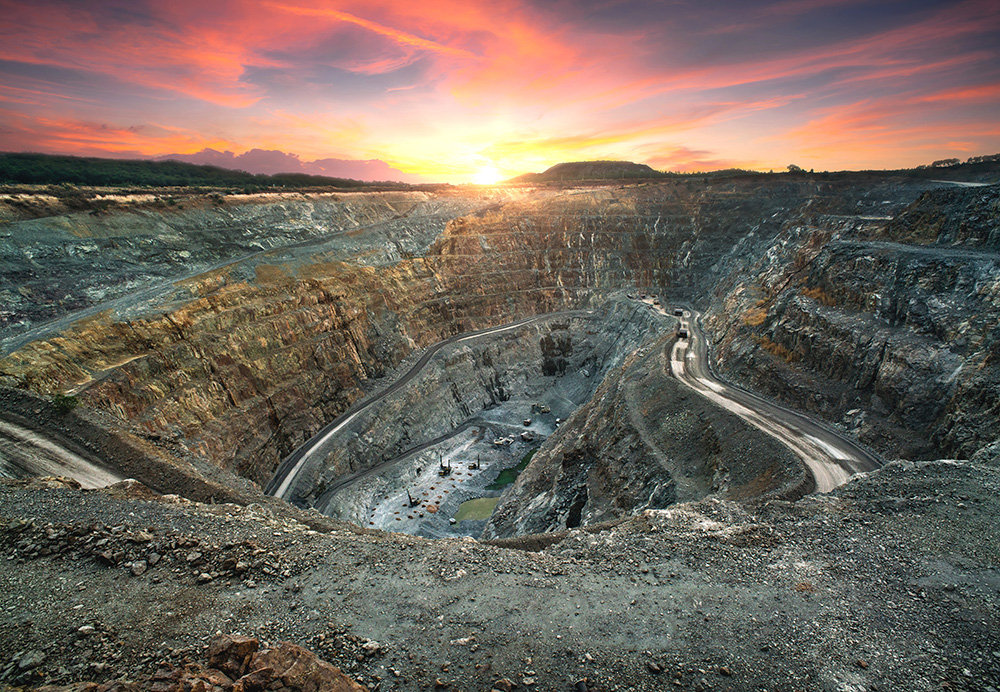
Microgrids served primarily by wind or solar generation are becoming attractive for mining operators
The Future
Grids in Need of Reform and Investment
Across Africa, many utilities are in urgent need of both reform and investment and several large economies in Africa, including South Africa and Nigeria, have power grids that have been close to collapse. But high financial and other risks can make financing of projects difficult, discouraging many investors and international banks. Many utilities also suffer from skills shortages.
In the short to medium term, it's difficult to see this changing, which means that in many countries where there are supply challenges, businesses and consumers will continue to take matters into their own hands and provide their own source of standby power. As Africa's population increases further, potentially doubling by 2050, the issue of investment in grids will become even more acute.
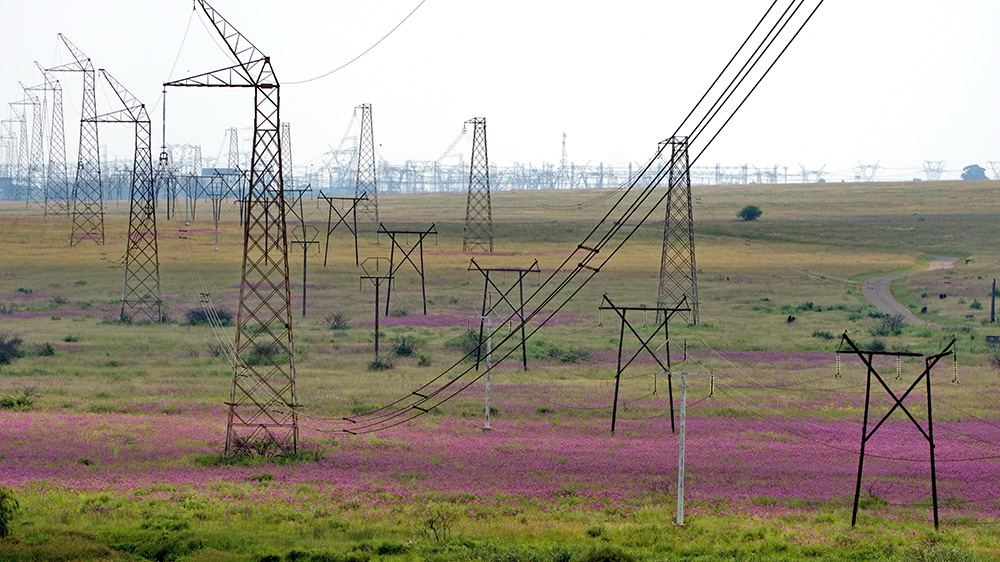
Transmission lines near Pretoria, South Africa
Renewables
Geographically, Africa is ideally placed for renewable power generation: on average, the region sees 3,000 continuous hours of sunlight every year, giving it the world’s richest solar resources. However Africa has so far installed only five gigawatts of solar photovoltaics, less than one per cent of global capacity.
In theory, for commercial applications, renewable power generation should be growing substantially. But in practice, power outages are so long and so regular, that, for now at least, most businesses would lack the space to generate and store enough solar-produced electricity. This means they tend to opt for tried and tested diesel generator sets as the solution.
There is an opportunity for solar and storage to displace some smaller diesel generator sets, mostly below 30 kVA, for small business applications and we believe this is starting to be reflected in the market data. In countries like Nigeria, over time we see solar / storage impacting more strongly on the residential sector and gradually displacing the many small gasoline-powered generator sets (which are outside the scope of this article).
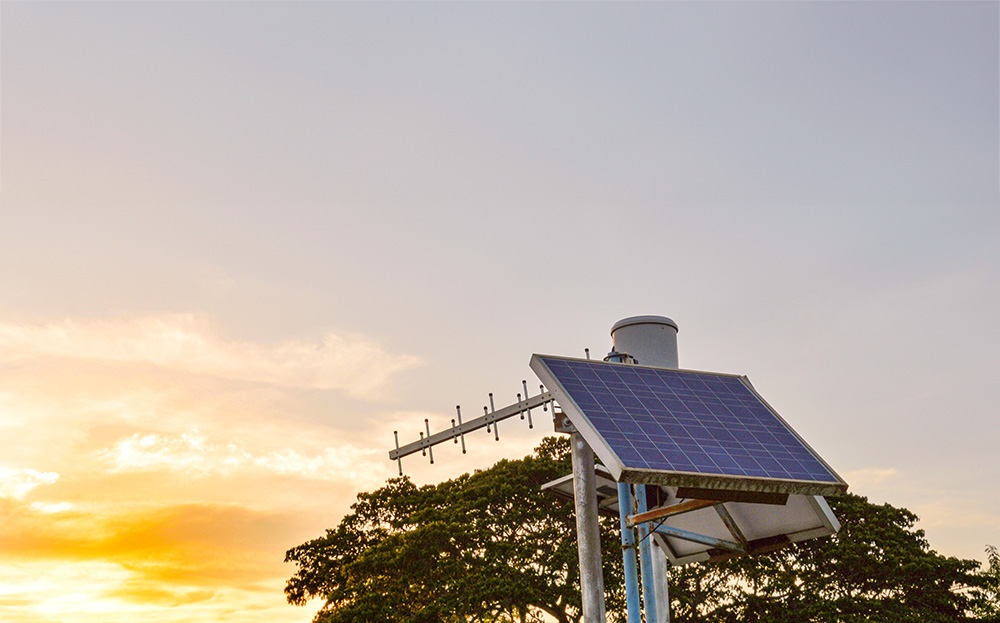
Microgrids
At the opposite end of the scale, for much larger businesses, there are significant and exciting opportunities for microgrids in Africa. Most are likely to be developed by private companies for their own use, for example mining operators who have plenty of land to support the installation of solar panels and wind turbines.
Over the longer term, microgrids could be ideal for bringing utility-supplied electric power to remote settlements which are difficult to connect to the grid. But for now and the foreseeable future, we see private companies as the main drivers.

There is huge untapped solar potential in Africa
The task ahead for Africa's electric utilities is colossal:
600 million people, more than 40% of the population have no access to electricity, equivalent to more than the population of Europe, or almost two times the population of the United States.
Average outages of more than three hours a day for those who do have access to electricity
The fastest growing population in the world, adding the equivalent of the population of Malaysia every year and likely to almost double to 2.5 billion by 2050.
A land mass three times the size of Europe or the United States with a significant population living in remote areas, difficult to access.
Existing transmission and distribution infrastructure in urgent need of investment.
There's little doubt that distributed generation and microgrids are the likely solution to Africa's electric power deficit. The challenge lies in the scale of the solution and how it will be funded. For the foreseeable future, developments are more likely to be from private investment, for example large companies investing in their own microgrids, with a more piecemeal approach at utility level.
Taking everything into account, for the foreseeable future, although the opportunity for diesel generator sets is likely to see some erosion at the very lowest power ratings and lose some ground to microgrids at higher ratings, through the 2020s and at least well into the 2030s it's likely that Africa will continue to be a significant and growing market for diesel generator sets.
Insights on Opportunity for Producers of Diesel Generator Sets
To find out more about this study, contact us at at enquiries@parkinsonassociates.com
Parkinson Associates publish an opportunity database, Genstat, available quarterly and annually, for diesel generator sets, split by 12 power bands for every country. Click here to find out more.
To find out more about our research in the diesel generator set industry, click here
Download this article as a pdf
